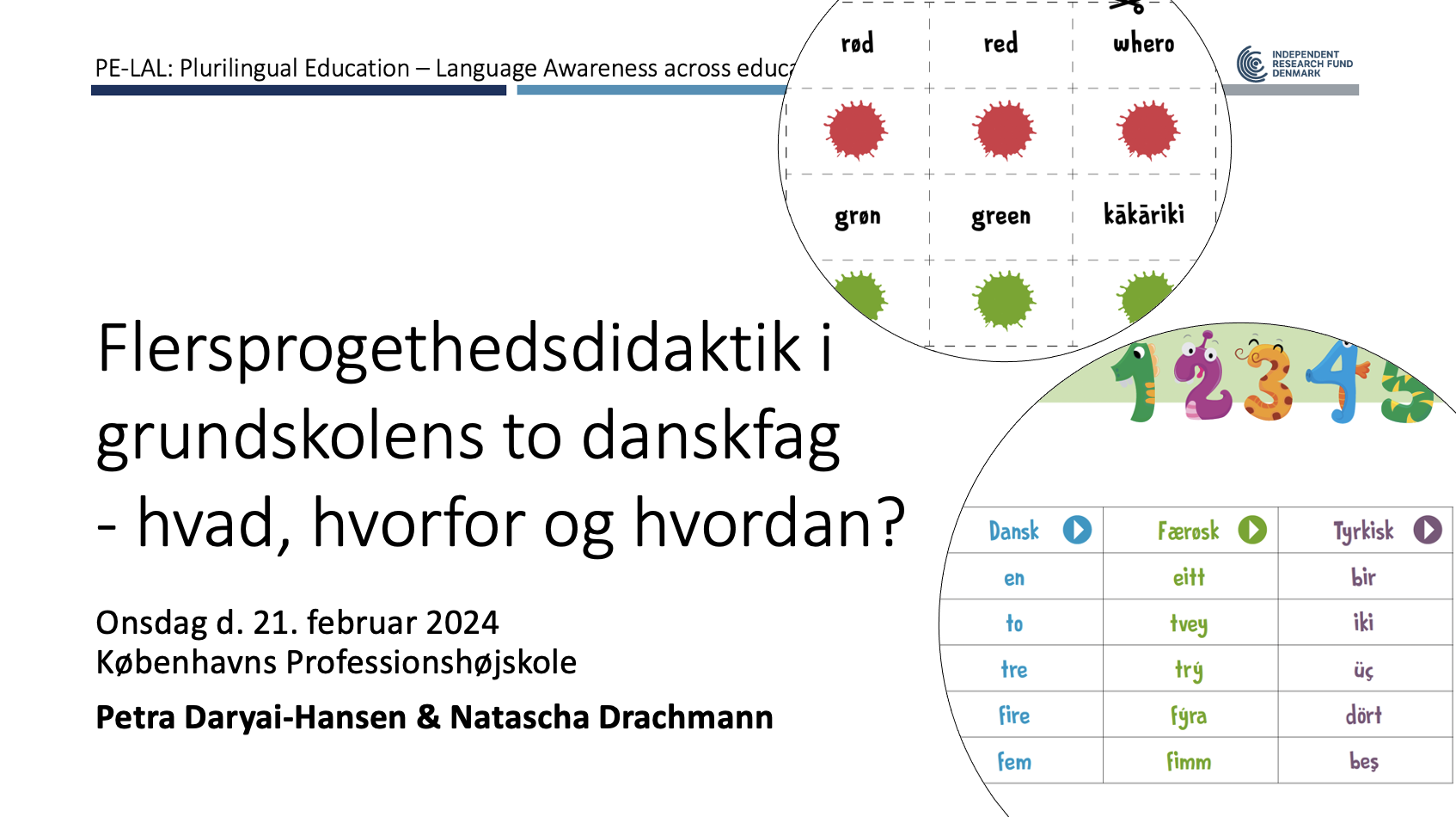Workshop for L1 teacher educators
 On 21 February 2024, Petra Daryai-Hansen and Natascha Drachmann host a workshop on the PE-LAL project's findings for teacher educators of Danish and Danish as a second language at the University College Copenhagen. Through presentations and exercises, the participants are invited to reflect on how plurilingual education can be implemented in the Danish subject in primary and lower secondary school – and what consequences this might have for Danish teaching in teacher education.
On 21 February 2024, Petra Daryai-Hansen and Natascha Drachmann host a workshop on the PE-LAL project's findings for teacher educators of Danish and Danish as a second language at the University College Copenhagen. Through presentations and exercises, the participants are invited to reflect on how plurilingual education can be implemented in the Danish subject in primary and lower secondary school – and what consequences this might have for Danish teaching in teacher education.
Abstract for the workshop
Plurilingual education in Danish and Danish as a second language in primary and lower secondary school – what, why and how?
Currently, there are more than 7,000 languages in the world, and today's society and classrooms are characterised by great linguistic diversity. All students of today in Denmark can be considered plurilingual because they all learn more than one language in and/or outside of school, all having language repertoires consisting of several languages. Despite this, the school’s language curriculum is based on a singular approach to languages (Candelier et al., 2010; Daryai-Hansen, 2018; Holmen, 2019), and the Danish subject in particular can be criticised for being a mother tongue subject (Kristjánsdóttir, 2015) and not a language acquisition subject (Drachmann, 2023), creating spaces for and benefitting from students’ language resources as a starting point for learning Danish. Thus, it is relevant to take a closer look at the language subjects in primary and lower secondary school and ask the question: How can language subjects open for and recognize today’s linguistic diversity and the plurilingual resources of all students, so that language teaching correlates with the real world?
Based on results from the research project Plurilingual Education - Minority and Majority Students' Language Awareness across Educational Levels (PE-LAL), the workshop explores the what, the why and the how of plurilingual education and examines its relevance and possibilities in language subjects in primary and lower secondary school with a special focus on Danish and Danish as a second language. Based on the PE-LAL project's model of plurilingual education, we dive into the curriculum for Danish and Danish as a second language and into teaching materials and student data developed and collected in the PE-LAL project. Finally, we discuss the PE-LAL project's recommendations for strengthening plurilingual education in language subjects in primary and lower secondary school in Denmark.
